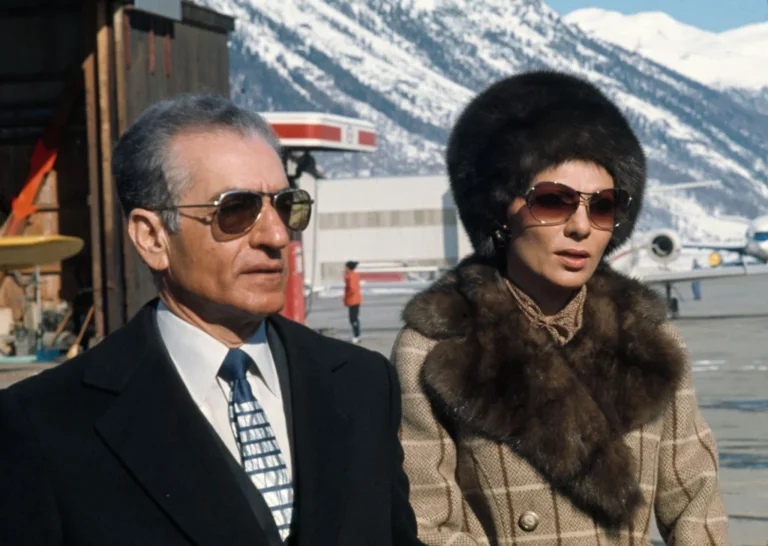Hook Introduction
Imagine a king living like a billionaire tycoon—flying his own private jet, sipping champagne in a desert tent city, and siphoning off millions every month from oil. That’s exactly how Shah Mohammad Reza Pahlavi parlayed a meteoric rise to power into an outrageously lavish lifestyle—fueled by Iran’s black gold. But how did a 33‑year‑old ruler go from constitutional monarch to autocratic oil baron overnight? And more importantly: How much was the Shah really worth in 1970—and what can it teach us about celebrity wealth, 21st‑century style?
📊 Celebrity Net Worth: How Rich Was the Shah?
Estimates vary, but by the late 1970s, the Shah was thought to control in excess of $5–10 billion (adjusted for inflation)—a staggering sum then and now. Consider this:
- In 1962, the National Iranian Oil Company wired $12 million in one single month directly into a personal account held by the Shah—equivalent to over $117 million today, by conservative measures.
- The Pahlavi Foundation had major stakes in hundreds of businesses across banking, mining, insurance, cement, construction, and hospitality—all covertly channeled to benefit the royal family.
In modern terms: think of Elon Musk-level net worth, but far quieter and far more secretive.
🛤️ How He Got Rich: A Meteoric Rise Fueled by Coup and Oil
Early Life & Power Grab
- Born in 1919, Mohammad Reza Pahlavi was thrust into power in 1941 after Allied forces forced his father, Reza Shah, to abdicate.
- At age 21, he became king—initially as a constitutional monarch under Western watch.
1953 Coup & Power Consolidation
- In 1951, nationalist prime minister Mohammad Mossadegh nationalized Iran’s oil—ousting Western firms.
- By 1953, CIA and MI6 orchestrated a coup (Operation Ajax) that reinstated the Shah with sweeping powers and Western ties—transforming him into a near-absolute ruler.
Oil Money Boom
- After the coup, Iran’s oil exports skyrocketed. By the mid-60s, Iran was among the world’s top 3 oil producers, trailing only Saudi Arabia and Venezuela.
- What does that translate to? Billions in revenue. In one reported month—the Shah banked over $100 million in today’s cash.
💼 Side Hustles & Ventures: Building a Royal Conglomerate
The Shah didn’t just sit back—he built what looked more like a private holding empire than a monarchy:
| Sector | Sultanate-Style Investments |
|---|---|
| Banking & Insurance | Owned 17 banks; 80% of Iran’s largest insurance company |
| Industry | Stakes in metal, mining, cement, and manufacturing firms |
| Hospitality & Construction | Controlled 70% of Iran’s hotel rooms; 45 construction firms |
| International Equity | Invested in GM Iran (10%), German steel, and Daimler-Benz |
| Real Estate | Prized properties in Tehran, Paris, London, Manhattan |
Behind the veneer of Pahlavi Foundation charity, the truth was stark: it was the Shah’s personal treasure chest.
🤝 Brand Collaborations & Lifestyle Sponsorships
Well before celebs struck fashion deals, the Shah and Empress Farah had their own prestige collaborations:
- Empress Farah donned designer couture from Dior, Givenchy, YSL, draping herself in Crown Jewels that included a custom Van Cleef & Arpels emerald-and-diamond coronation tiara.
- The Shah himself reputedly commissioned bespoke vehicles—including a Mercedes-Benz 600 Landaulet usually reserved for popes and dictators—and a custom Mercedes G-Wagen prototype, shaping a vehicle that would later become a consumer favorite.
This was wealthy branding on a geopolitical scale: luxury, exclusivity, and state-level influence.
🏛️ Investments: Flying High in Oil, Land, Jets & Jewels
Oil Revenue Diversification
- Post‑1953 deal: Western consortiums retained operational control, but Iran—hence the Shah—gained larger cuts from production.
- The Pahlavi Foundation channeled much of this into large-scale diversification of assets—mining, cement production, agriculture.
Palm-lined Palaces & Private Plane Empire
- Residences: Niavaran Palace, Caspian Sea retreats, Sa’dabad Complex—brimming with art, antiquities, and priceless furnishings.
- Aircraft: A customized Boeing 727 nicknamed “Shahbaz”—complete with luxury interiors; he was even known to pilot it himself.
- Car Collection: Over 140 exotic vehicles (Ferrari, Rolls-Royce, Lamborghini, Porsche)—including prototype concept cars.
Jewelry & Crown Wealth
- His crown alone: studded with more than 3,000 diamonds. Empress’s tiara: evergreen emeralds and diamonds.
- Crown Jewels: One of the world’s most valuable royal treasure collections.
🏟️ The 1971 Mega-Event: A $2 Billion Birthday Party
Celebrating 2,500 years of Persian monarchy, the Shah hosted the most expensive party in modern history:
- A tent city constructed at Persepolis—with silk-draped pavilions, air-conditioning, flighted-from-Paris cuisine, and 600 world VIP guests
- Fireworks, peacocks, champagne—an unfolding spectacle
- Estimated cost: $300 million in 1971 (~$2 billion today)
Yes—just three nights of extravaganza that still reverberate as the ultimate symbol of excess.
⚠️ Public Backlash: Inequality Sparks Revolution
As riches poured into royal coffers:
- Inflation soared
- Wealth disparity became a yawning economic canyon
- Middle and working classes felt abandoned
- The Shah’s wealth—his private jets, his Swiss bank accounts, his crown jewels—became lightning rods for anger
By 1978, tah of the populace turned into protests. Religious leaders, intellectuals, and everyday people rallied against what they called corruption, exploitation, and Western puppetry.
😱 Downfall & $4 Billion Escape
In January 1979, faced with an unstoppable national uprising:
- Mohammad Reza Pahlavi fled Iran, never to return.
- He died in July 1980 in exile in Egypt, aged 60, his vast empire left behind.
- It’s estimated that his immediate family departed with around $4 billion in assets—funds that remain partly unaccounted for today.
🔄 What Replaced It? The Rise of Setad
Post-revolution, Iran’s new leaders seized and liquidated royal assets. But soon, those resources reemerged under a new name—Setad:
- Launched in 1989 by Supreme Leader Ali Khamenei
- Today controls $200 billion+ in diversified assets: banking, telecom, pharma, real estate, agriculture
- A quiet, vast—and arguably more opaque—shadow economy than the Shah’s ever was
📈 Conclusion: Legacy of a Billionaire King
From lavish jets to crown jewels, from desert palaces to underground oil wells, the Shah’s fortune reads like a modern celebrity billionaire origin story—only this one ruled a country.
- He used oil to build an empire, not just personally, but institutionally.
- Yet his excess triggered a social uprising that cost him everything.
- And though he’s gone, his blueprint for wielding resource wealth endures—through Iran’s current economic elite.
How much was the Shah worth in 1979? Likely tens of billions in today’s dollars—comparable with today’s celebrity founders and tech moguls. His real legacy? A cautionary tale that unchecked wealth can unravel nations, no matter how glamorous.
With more power re-consolidated behind Iran’s modern oligarchs, the era of “celebrity-deep-pocket-empire” continues—just under different faces and global contexts.
✅ Key Takeaways & Shareable Hooks
- Hooking headline: “Exiled King or Oil Baron? How the Shah of Iran Built a $Billions Oil‑Driven Empire”
- SEO boosters: “Shah net worth 1979,” “celebrity empire oil,” “massive party Persepolis Shah”
- Share‑ready bullets:
- Think Beyoncé-level fame, but with bombs and black gold
- $2B party in the desert—biggest birthday bash ever thrown
- Modern Iran’s $200B state empire traces back to Shah’s oil pipeline
Suggested Visuals & Embeds
- Image carousel: Shah and Farah at Persepolis, the tent city, their car collection
- Video clip suggestion: ‘Inside the Shah’s $2B 1971 celebration’, perhaps from BBC archival footage
- Infographic: Monthly oil payouts, net worth trend line, opulence vs. unrest timeline








